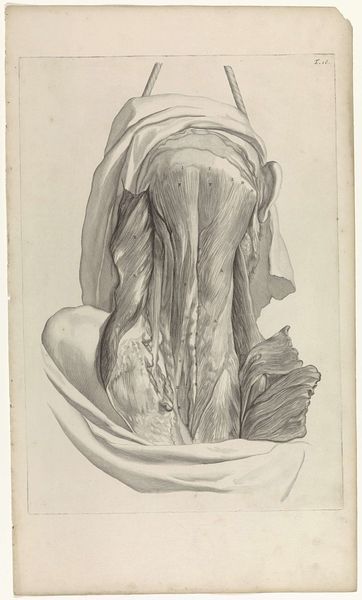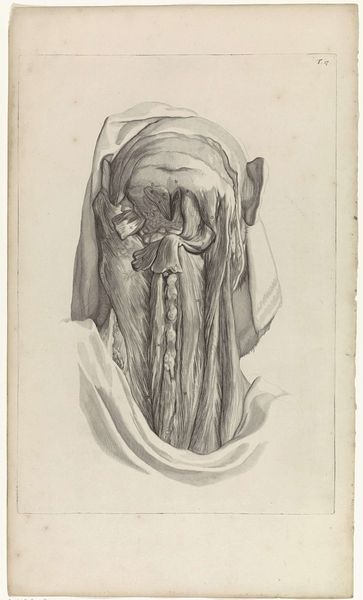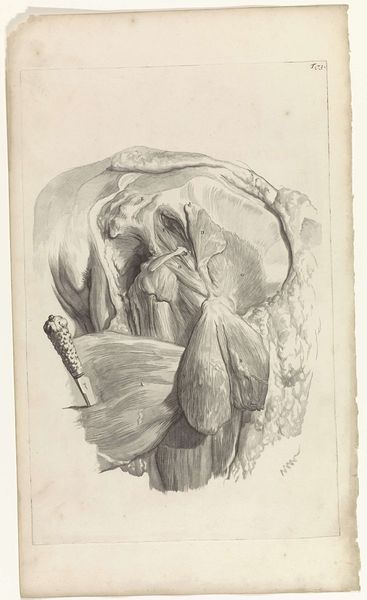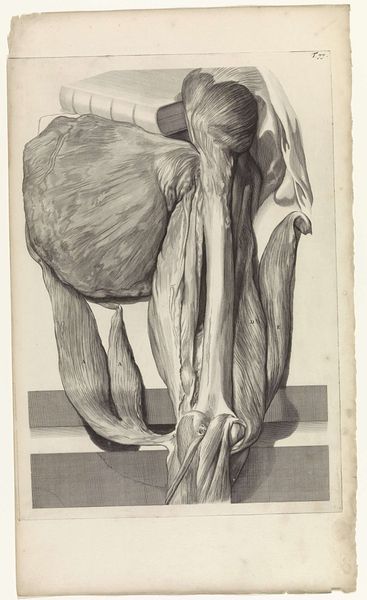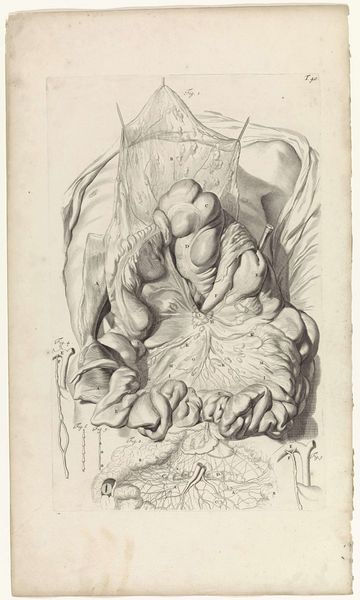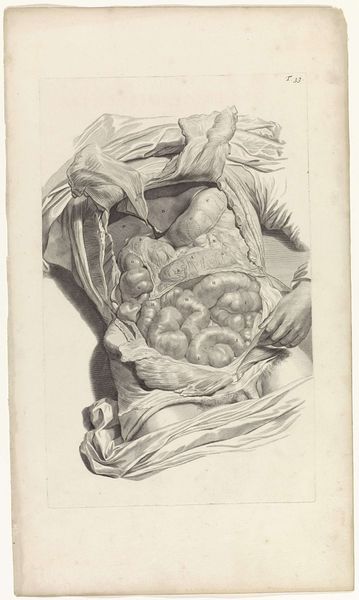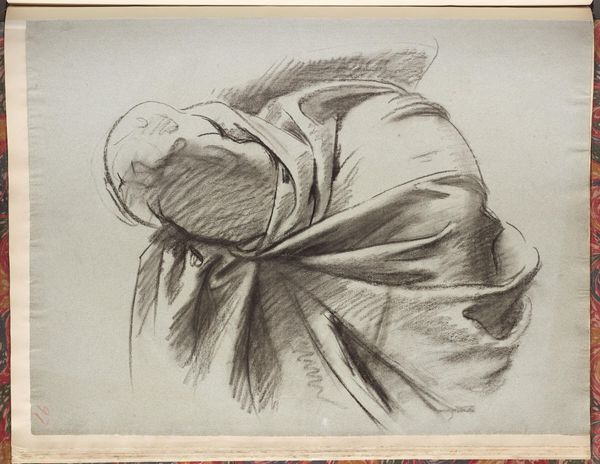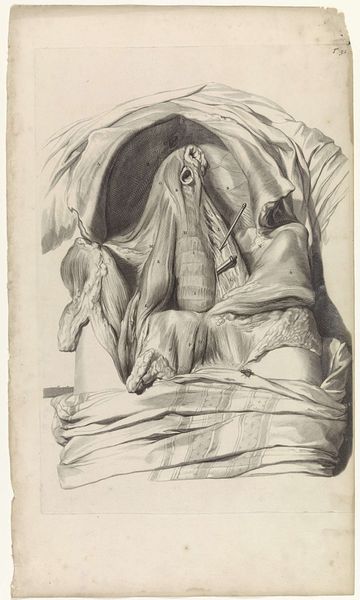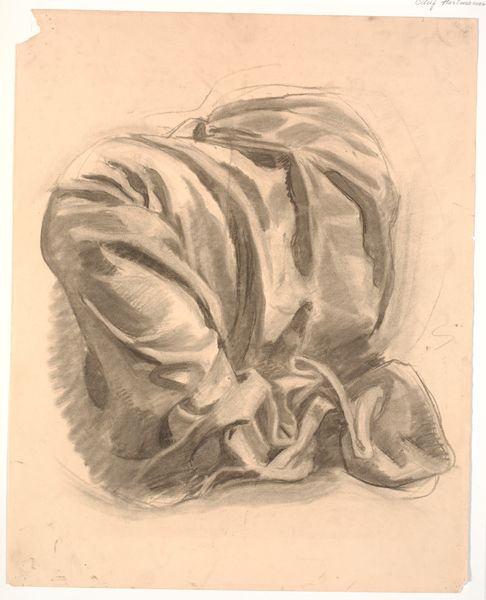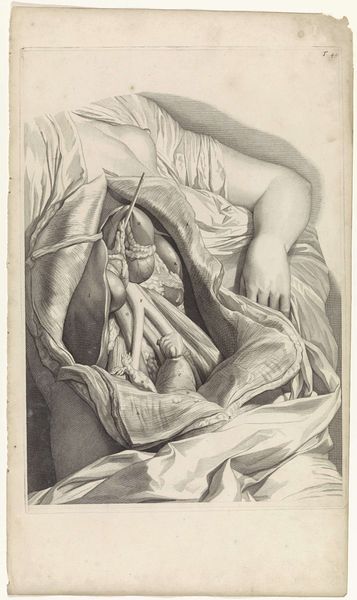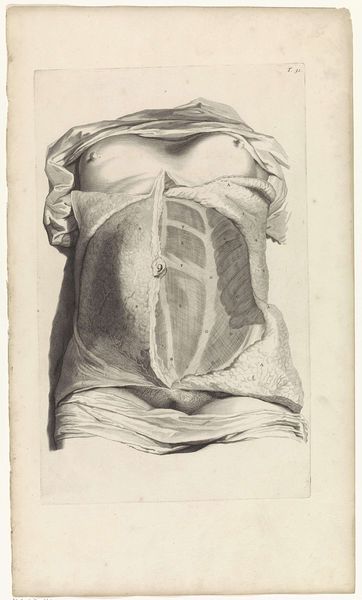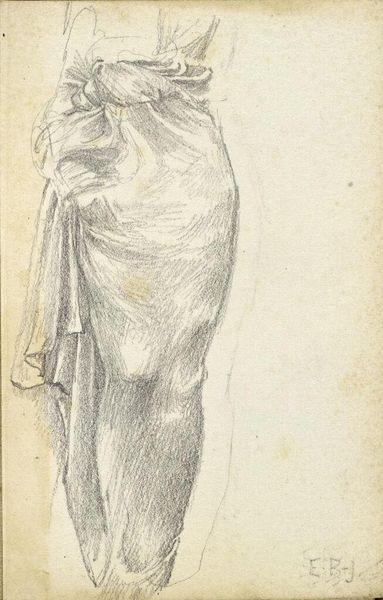
Anatomische studie van de spieren van het linkerdijbeen en de heup 1685
0:00
0:00
pietervangunst
Rijksmuseum
drawing, dry-media, pencil
#
pencil drawn
#
drawing
#
charcoal drawing
#
figuration
#
dry-media
#
pencil drawing
#
pencil
#
academic-art
#
realism
Dimensions: width 345 mm, height 490 mm
Copyright: Rijks Museum: Open Domain
Curator: Up next, we have an anatomical study, rendered with scientific precision. It’s called *Anatomische studie van de spieren van het linkerdijbeen en de heup*, attributed to Pieter van Gunst around 1685. Editor: Immediately, I see an incredible tension here. The stark lines of the muscles contrast so vividly with the softer, draped cloth, creating an almost sculptural effect despite being a drawing. Curator: The interplay you mention feels intentional. This kind of precise drawing represents a peak in the detailed anatomical studies from the period. Artists aimed to understand and represent the human body's inner workings, influencing not just medicine but also art. Editor: I notice that in representing human anatomy, there's a deliberate deconstruction, laying bare structures that are usually hidden. Do you think it speaks to a changing attitude towards the body? Was there an underlying shift towards empiricism? Curator: Yes, precisely. Before this era, certain depictions were taboo. Dissecting cadavers, for instance, held both scientific value and complex ethical considerations. Seeing that knowledge so vividly depicted here, becomes emblematic of shifting views toward science. Editor: It almost feels as though the artist were mediating between the objective realm of scientific anatomy and something inherently human – this quest to dissect our physical makeup feels incredibly human. The symbols of academic realism connect past and present knowledge production in unexpected ways. Curator: Exactly. Van Gunst shows the influence of that transitional period of art. His realism reflects the empirical spirit of his era. Editor: Analyzing Van Gunst’s study has offered not just a look into 17th-century anatomy, but also into broader, lingering attitudes toward scientific exploration and the body. Curator: Indeed. It brings us face-to-face with cultural artifacts that subtly but powerfully reflect shared cultural perspectives.
Comments
No comments
Be the first to comment and join the conversation on the ultimate creative platform.
